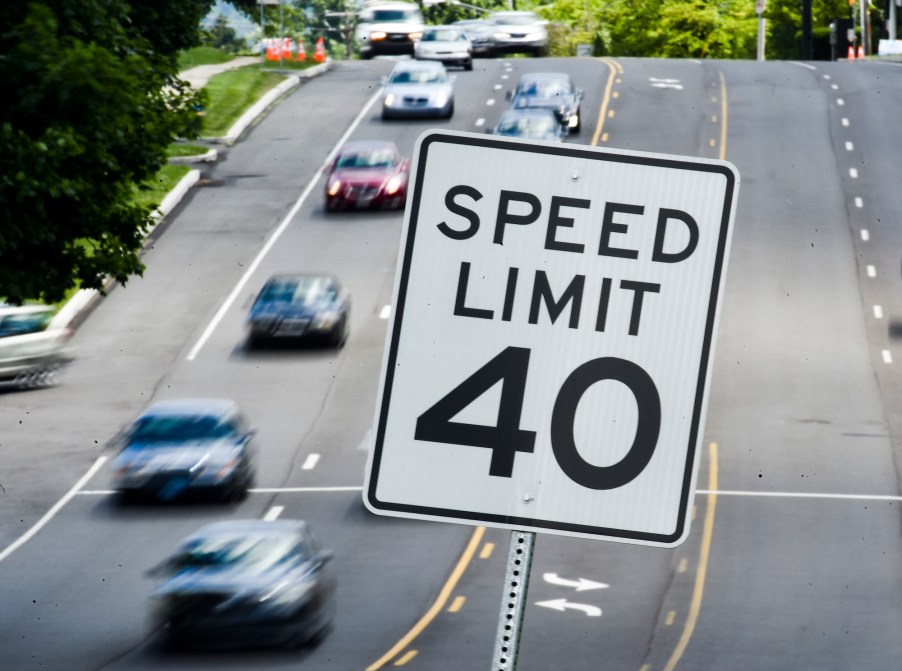
Why Do Some Roads Have a Minimum Speed Limit?
Can’t we all agree to drive at or just under the posted speed limit? Unfortunately, not every driver understands speed limits. Minimum speed limits aren’t as mysterious as they seem when you consider the benefits to daily traffic, car safety, and long-term traffic statistics. For most motorists, minimum speeds aren’t an issue (we’re more concerned with going over the limit). So who needs those minimum limits, and why do some roads have them?
Minimum speed limits improve traffic flow

To put it simply, minimum speeds improve traffic flow, especially on narrow highways with only one or two lanes per direction. Geico says that when one driver goes especially slow, it can create a blockage, delays, hazards, and even road rage. Other drivers are either held up by the slow driver or swerve wildly around them, increasing the chance of accidents.
Minimum speed limits usually appear on long highways and freeways with fewer lanes or congested areas, such as interstates traveling through large cities. It contrasts with the country roads and lets the road’s slowest drivers know that they need to speed up, pull over, or find an alternate local route.
Minimum speeds also prevent right-lane blocking and left-lane camping
Minimum speed limits have a way of clearing travel lanes. The minimum speed often prevents motorists in the right-hand lane from becoming a drag on the traffic flow.
Keeping the slow traffic going at a decent pace also helps reduce dangerous swerving and left lane “camping.” Left lane camping is when one driver stays in the left-most passing lane indefinitely, often justifying the choice by passing every vehicle they cross. This is also irritating and potentially dangerous behavior that minimum speeds can help prevent.
They decrease difference-in-speed collisions
When two vehicles collide, the force of that collision is calculated with the vehicles’ opposing velocities. Increasing the base speed of the slowest traffic can reduce the severity of a crash with a faster-moving vehicle.
Because velocities are closer to similar, the effects of the impact may also be lessened. Think about it like running up to a friend and slamming into them. If the friend is still and you are running, you both go flying. If the friend is also running, and you hit them as you catch up, the collision is more likely to be a glancing one with far less opposing force involved.
It has certainly been proven that stretches with higher maximum and minimum speeds are less prone to accidents.
Limits increase proper lane use and safety
When a minimum speed enforces the slowest traffic to travel at a reasonable pace, everyone drives more safely and uses the lanes more apt for the traffic flow and their needs.
Minimum speed also reduces clogging in the right lane, which reduces the mad dash to get past them.
According to ScienceDirect, left-lane passing and camping are all too common, and the middle lane (if there is one) becomes unsafe when drivers use it to pass the slowpoke.
Minumum limits promote greater use of hazard lights
Finally, a minimum speed lets motorists know when to turn on their hazard lights. If a truck has to slow to a crawl or a cargo pickup needs to drive more carefully, flashers let you know from a distance that a vehicle ahead is moving slowly or is stopped.
So, why do dome roads have minimum speed limits? The answer is to protect everyone, including motorists traveling too slowly and drivers at risk of hitting the slowpokes.


